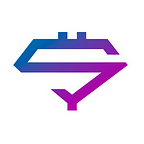Blockchain Alternatives: How Other DLT Types Work?
The popularity of cryptocurrencies is undeniable. Millions of users worldwide enjoy this brand new ecosystem with investment, trading, and consuming opportunities. Coins are more convenient compared to fiat money. Crypto exchanges are more accessible compared to stock ones. Even our team has launched Superorder for crypto traders solely. Means, we have a whole new market for new customers today.
While this popularity attracts numerous new users, it also muddles them. We don’t even talk about people who think that Bitcoin and blockchain are the same. But a lot of tech-savvy investors confuse blockchain and distributed ledger technology (DLT). In the article, we’re going to finally distinguish these concepts. Moreover, we will list three more DLT examples apart from blockchain. Well, let’s go.
Understanding DLT and Blockchain
Beginning with the simplest ideas, we should remember that there are different types of databases. Our ancestors stored information in their own memory, either individual or collective. Ancient Egyptians utilized papyrus, Sumerians had clay tablets, and the Inca people invented a mind-blowing quipu — recording systems based on knotted strings.
Today, people use paper databases and electronic ones — traditional ledgers. But we also have distributed ledger technology that differs significantly. Centralized bases have fixed locations and processing cores. Instead, DLT allows building systems that exist in different locations and involve all participants in processing and decision making.
In a nutshell, a distributed ledger is a database shared across several storing/processing units. And blockchain is only one type of DLT. The structure of successively connected blocks became the most popular because of Bitcoin but not all distributed ledgers share the same architecture.
Three More Types of DLT
Apart from blockchain, there are more inventions. Some of them are pretty infamous so we will not cover them. Instead, we want to talk about three structures that are quite popular today. Of course, they can’t compete with blockchain that conquered hundreds of systems. Actually, the majority of cryptocurrencies are based on blockchains. But skeptics say that more advanced DLT types are going to survive the great burst. We’ll see.
1. Directed Acyclic Graph
This architecture is the main blockchain competitor. Directed acyclic graph or DAG removes blocks, miners, and fees. According to this concept, all transactions are independent as nodes aren’t connected subsequently but can interact with any elements and validate any deals. Ideal DAGs ensure total fairness between the entire network. They rely on equal nodes that reach consensus without energy-efficient PoW.
2. Distributed Hash Table
The heading defines only a part of the DLT type we want to talk about here. Distributed hash tables (DHT) are widely used today. However, Holochain is the only project that integrates DHT instead of blockchain structures in the crypto world. It builds a system where each node runs its own chain called hashchain. This allows nodes to add data locally without costly consensus algorithms. Then, data is validated and shared via DHTs.
- Advantages: unlimited scalability with a large number of TPS; rich performance; gossip-based validation; good for universal consensus.
- Downsides: potential security issues; lack of global consensus; not suitable for storing and exchanging private data.
- Famous projects: Holochain.
3. Hashgraph
The last type we want to talk about is also realized in only one project — Hedera Hashgraph. The eponymous DLT type relies on two key approaches: virtual voting and gossip-about-gossip protocol. Cross-validated nodes share information about transactions and don’t need validation. Once 2/3 of the whole network knows this info, it’s considered true. In this way, Hashgraph reaches asynchronous Byzantine fault tolerance (aBFT).
- Advantages: no need for PoW algorithms; high scalability with good TPS rate; perfect gossip-based consensus with high efficiency.
- Downsides: focus on permissioned systems; lack of global testing and adoption; poor decentralization; queued transactions.
- Famous projects: Hedera Hashgraph.
Closing Thoughts
As you can see, neither blockchain nor other DLT types can solve the great scalability trilemma. Blockchains are decentralized and secure but not as scalable as we want. Other ledgers may be secure and scalable or scalable and decentralized but they lack the third element.
For instance, IOTA’s Tangle is pretty centralized as there’s a core controlling node now. Hedera Hashgraph also is based on the architecture with doubted decentralization. Holochain is undeniably decentralized and scalable but lacks security. Still, it’s nice to see that different technologies are rising. Competition is the key to success here.
At Superorder, we try to help our customers to trade all the possible coins. You can access top-rated exchanges like Binance and CEX.IO. You even can install a simple Chrome extension and trade from TradingView charts easily! Choose your beloved projects or DLT types and begin trading, guys. See you!
